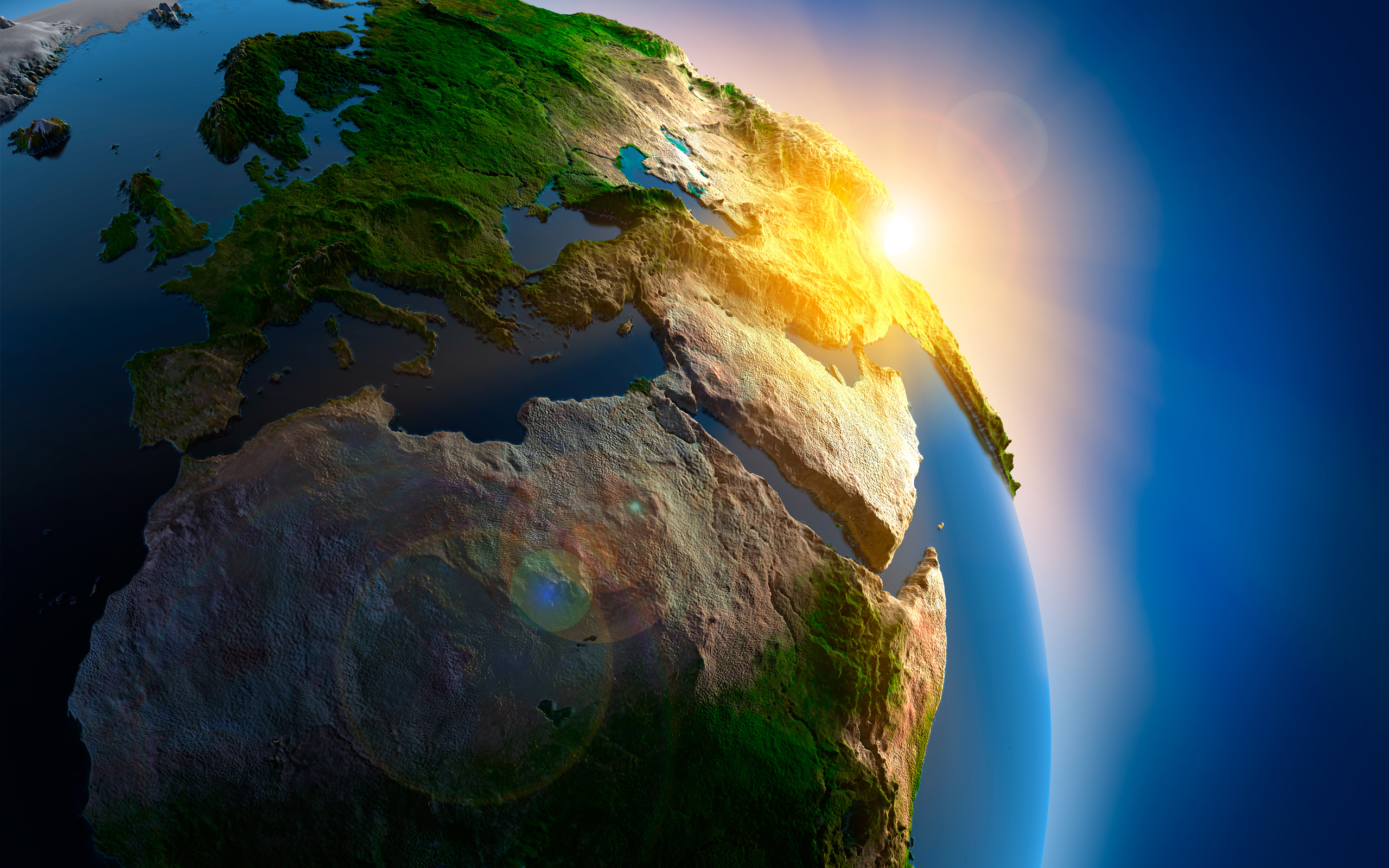CONCEPT OF THE EARTH ‘PRITHVI’ in VEDAS
The concept of the form of the earth in the Rig-veda is most fascinating. It is mostly addressed along with the heaven into a dual conception (Rodasi, Dyavaprithivi). There is one small hymn addressed to Prithivi, while there are six hymns addressed to Dyavaprithivi. Prithivi is considered the mother and Dyau is considered the father in the Vedas, and they form a pair together. One of the most beautiful verse of the Rig-veda says, ‘Heaven is my father, brother atmosphere is my navel, and the great earth is my mother.’23 Heaven and earth are parents: Matara, Pitara, Janitara24 in union while separately called as father and mother. They sustain all creatures. They are parents of all gods. They are great (Mahi) and widespread.
Earth is described as a goddess in Rig-veda. In the Atharvaveda, the earth is described in one hymn of 63 verses. This famous hymn called as Bhumisukta or Prithivisukta indicates the environmental consciousness of Vedic seers. The seers appear to have advanced understanding of the earth through this hymn. She is called Vasudha for containing all wealth, Hiranyavaksha for having gold bosom and Jagato Niveshani for being abode of whole world. She is not for the different races of men alone but for other creatures also.25 She is called Visvambhara because she is representative of the universe. She is the only planet directly available for the study of the universe and to realize the underlying truth. This is wide earth which supports varieties of herbs, oceans, rivers, mountains, hills etc. She has at places different colours as dark, tawny, white. She is raised at some place and lowered at some places.
The earth is fully responsible for our food and prosperity. She is praised for her strength. She is served day and night by rivers and protected by sky. The immortal heart of earth is in the highest firmament (Vyoma). Her heart is sun. ‘She is one enveloped by the sky or space and causing the force of gravitation. She is described as holding Agni. It means she is described as the geothermal field. She is also described as holding Indra i.e., the geomagnetic field. The earth is described then as being present in the middle of the oceans (sedimentary rocks) and as one having magical movements.’26 The hymn talks about different energies which are generated from the form of the earth.³‘O Prithivi! thy centre, thy navel, all forces that have issued from thy body- Set us amid those forces; breathe upon us.’27 Thus, the earth holds almost all the secrets of nature, which will help us in understanding the universe. She is invested with divinity and respected as mother³‘The earth is my mother and I am Her son.’28 The geographical demarcations on this earth have been made by men and not by nature

The concept of the form of the earth in the Rig-veda is most fascinating. It is mostly addressed along with the heaven into a dual conception (Rodasi, Dyavaprithivi). There is one small hymn addressed to Prithivi, while there are six hymns addressed to Dyavaprithivi. Prithivi is considered the mother and Dyau is considered the father in the Vedas, and they form a pair together. One of the most beautiful verse of the Rig-veda says, ‘Heaven is my father, brother atmosphere is my navel, and the great earth is my mother.’23 Heaven and earth are parents: Matara, Pitara, Janitara24 in union while separately called as father and mother. They sustain all creatures. They are parents of all gods. They are great (Mahi) and widespread.
Earth is described as a goddess in Rig-veda. In the Atharvaveda, the earth is described in one hymn of 63 verses. This famous hymn called as Bhumisukta or Prithivisukta indicates the environmental consciousness of Vedic seers. The seers appear to have advanced understanding of the earth through this hymn. She is called Vasudha for containing all wealth, Hiranyavaksha for having gold bosom and Jagato Niveshani for being abode of whole world. She is not for the different races of men alone but for other creatures also.25 She is called Visvambhara because she is representative of the universe. She is the only planet directly available for the study of the universe and to realize the underlying truth. This is wide earth which supports varieties of herbs, oceans, rivers, mountains, hills etc. She has at places different colours as dark, tawny, white. She is raised at some place and lowered at some places.
The earth is fully responsible for our food and prosperity. She is praised for her strength. She is served day and night by rivers and protected by sky. The immortal heart of earth is in the highest firmament (Vyoma). Her heart is sun. ‘She is one enveloped by the sky or space and causing the force of gravitation. She is described as holding Agni. It means she is described as the geothermal field. She is also described as holding Indra i.e., the geomagnetic field. The earth is described then as being present in the middle of the oceans (sedimentary rocks) and as one having magical movements.’26 The hymn talks about different energies which are generated from the form of the earth.³‘O Prithivi! thy centre, thy navel, all forces that have issued from thy body- Set us amid those forces; breathe upon us.’27 Thus, the earth holds almost all the secrets of nature, which will help us in understanding the universe. She is invested with divinity and respected as mother³‘The earth is my mother and I am Her son.’28 The geographical demarcations on this earth have been made by men and not by nature

No comments:
Post a Comment